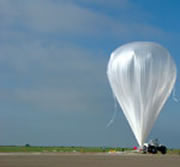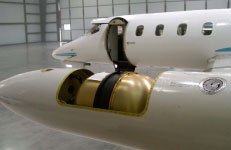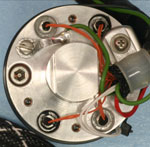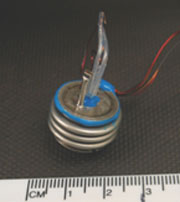CLARREO Mission
10 Years of ESTO Technology Investments are Enabling the
CLARREO Mission, Shaping Future Radiation Budget Measurements
October 8, 2010 – Philip Larkin, NASA ESTO
![]()
|
In 2017, NASA plans to launch the first in a series of satellites that will comprise the Climate Absolute Radiance and Refractivity Observatory (CLARREO) mission. The CLARREO mission will measure the amount of energy entering and leaving the atmosphere – Earth’s radiation budget – more accurately than ever before, providing a reliable benchmark for the climate record going forward and improving climate prediction and modelling. For nearly a decade, carefully managed technology projects built and validated early versions of the instruments and components needed for such a mission. In many ways, the development of these early investments enabled the designation of CLARREO as a mission concept in 2007. What follows are a few of these key technologies, including recent investments focused more specifically for CLARREO mission requirements. |
||||
 |
The Far-Infrared Spectroscopy of the Troposphere (FIRST) instrument, an early airborne precursor to CLARREO, was demonstrated in 2005 on a high-altitude research balloon (shown left) and provided the first-ever high resolution measurement of the complete infrared emission spectrum of the Earth, including the key far-infrared region from 15 to 100 microns that contains over 50% of Earth’s longwave radiation. More recently, FIRST was installed at 17,500 feet atop the Cerro Toco Plateau in Chile as part of the Radiative Heating in Underexplored Bands Campaign – II (RHUBC-II). [PI: Mlynczak, NASA LaRC, IIP 2001 and 2004] | |||
| The In-Situ Net FLux within the AtMosphere of the Earth (INFLAME) project has developed a Fourier Transform Spectrometer to measure upward and downward radiation fluxes simultaneously in the lower atmosphere. INFLAME was successfully demonstrated on a LearJet in 2010 (shown right) and may provide calibration/validation data for CLARREO. [PI: Mlynczak, NASA LaRC, IIP 2004] |  |
|||
 |
Initiated in 2008, the Hyperspectral Imager to Meet CLARREO Goals of High Absolute Accuracy and On-Orbit SI Traceability project seeks to design and construct an advanced, high accuracy Hyperspectral Imager (left), investigate attenuation methods, and validate the solar cross-calibration approach for the CLARREO Mission concept. [PI: Kopp, Univ. of Colorado, IIP 2007] | |||
| Another recent investment, the Advanced Accuracy Satellite Instrumentation for the CLARREO Mission project, seeks to develop and test several key calibration subsystems, such as temperature calibration for the blackbody cavity shown at right, dual absolute radiance interferometers, and an emissivity module. [PI: Revercomb, Univ. of Wisconsin, IIP 2007] |  |
|||
| Instrument integration activities are also ongoing in the Calibrated Observations of Radiance Spectra from the Atmosphere in the far-InfraRed (CORSAIR) project. CORSAIR combines a set of technologies central to the CLARREO mission: infrared detector elements, blackbody radiance standards, and robust optical beamsplitters with continuous high efficiency over the full spectral range. [PI: Mlynczak, NASA LaRC, IIP 2007] | ||||
 |
A new effort began in 2010 to Demonstrate Thermal Phase Change Cells Onboard the International Space Station (ISS). The CLARREO mission proposes to use phase change reference standards (melt cells) to recalibrate its on-board temperature sensors; however, these standards have never been flown in space. This project will achieve in-space testing of two melt cell designs, provided by University of Wisconsin and The Space Dynamics Laboratory at Utah State University (shown left), in 2011 onboard the ISS. [PI: Mlynczak, NASA LaRC] | |||